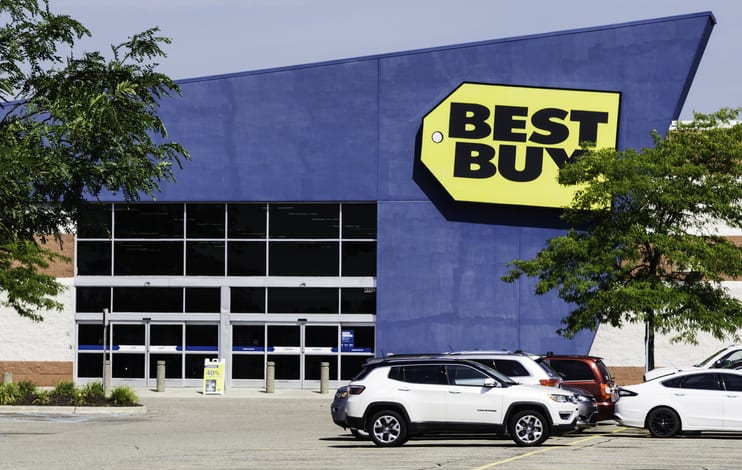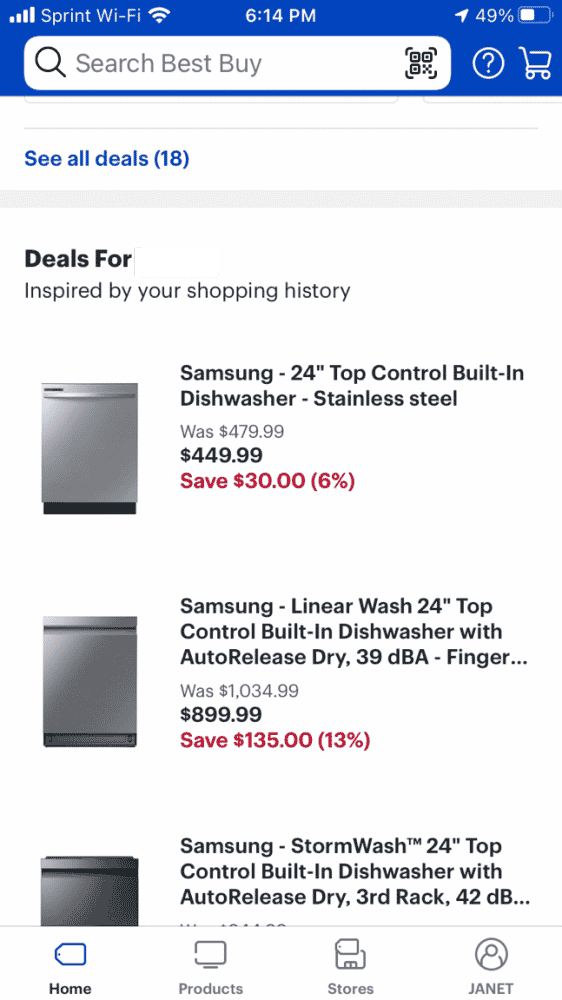How Best Buy Beats Amazon with a Superior Site Experience

Every retailer talks about creating a seamless customer experience, but Best Buy is one of the few achieving it. The company’s approach is summed up by a quote from CEO Corie Barry when she spoke at CES in January 2021:
“We need to agnostically meet that customer where they are,” she said, whether that customer is shopping in one of the company’s 977 stores, viewing both promotional and triggered emails, browsing BestBuy.com or its mobile app, or picking up an online order curbside.
Seamless customer experiences are why Best Buy is ranked second in the 2021 Retail Personalization Index.
Connection: the key to a superior site experience
On the front end, every Best Buy customer sees and feels a website experience that flows seamlessly across all digital, mobile, and in-store channels. Activity the customer generates in one location is reflected immediately in another, giving Best Buy the 360-degree customer view so many retailers seek.
Best Buy’s website is built to think like its customers. The search process can follow either a traditional filter-selection path or a process that starts with an initial sorting screener that focuses on product benefits before going into filters for a more precise search. This benefits-before-features approach gets customers to their most viable options faster.
Suppose your customer wants a new dishwasher. She starts the process by clicking the dishwasher icon in your online store. But, instead of going to a results page and sorting through dozens of filters, she sees a pop-up screen that asks, “First, how quiet do you want your dishwasher to be?” The next screen lets her choose models with hidden or front controls. A final screen has more tips on how to choose the right model, then goes to a results page with a preliminary set of features and specs that the customer can use to filter results even further.
Pretty cool, huh? Your buyers get the best of both worlds: the intelligence of an in-store interaction mixed with the convenience of an at-home shopping experience. And, more importantly, they get the perfect product they were looking for. This simple, easy-to-use design is why Best Buy’s website experience is so highly rated.
But it’s not over yet. Because Best Buy closes the online search loop by sending each shopper’s results to their mobile app. That way, customers can view products from their app homepage and use their phone to place an order or schedule an in-store consultation.
Best Buy’s mobile app integrates desktop browse and search data to recommend purchases that are made visible on its homepage.
With location-enabled tracking capabilities in both mobile and website experiences, the customer can see right away if the model she wants is in stock, available to pick up curbside, when it could be delivered, and even how soon she could get it installed if she uses Best Buy’s service.
What does the back-end of Best Buy look like?
To create highly targeted marketing, the company built a back-end database that tracked more than 12,000 attributes across every aspect of the customer journey. More importantly, the database uses millions of unified profiles to create that superior, seamless experience across every channel and store location.
That means relevant, on-site and email recommendations that change over time as new website activity is factored in.
Best Buy also uses the personalization data collected from its My Best Buy membership program to track reward points, orders, and purchases for more convenient use whenever they’re needed. Real-time info such as time of day, location, etc. can also tailor unique website or email communications to a specific shopper—enhancing their brand interactions across digital channels.
Best Buy uses Google Cloud to unify its data sources across legacy platforms—a perennial challenge for companies dealing with multiple generations of technology. It also uses machine learning powered by AI models to build more personalized offers and recommendations, to tailor rewards, and to streamline handoffs among touchpoints.
Customer support is another AI-driven service designed to get customers to answers fast. It combines an intuitive “Virtual Agent” chatbot with several frequently asked questions to speed up queries. For Best Buy, a live chat service staffed by customer care agents who can access a shopper’s profile data means less time collecting background and more time spent on solving the problem with its superior website experience.
Why Best Buy Ranks No. 2 and Amazon is No. 86
In the 2021 Retail Personalization Index, the scoring gap between Best Buy and its archrival Amazon keeps growing. While nobody knows what’s coming next with 100% certainty, we predict this trend to continue as Best Buy further invests in personalizing its entire customer journey and reducing the steps it takes to get customers from purchase to delivery.
Best Buy leads with a customer-first perspective and a connected experience across website, email, and mobile channels. Data-led customer support and paying close attention to the things customers care about most are the two things this brand does best.
Getting the right product into a buyer’s hands as fast and hassle-free as possible is what Best Buy’s website experience is all about—and why it’s beating Amazon so badly at the personalization game. A superior site experience has taken Best Buy from surviving to thriving. Going forward, that’s a great place to start expanding your customer’s universe.
